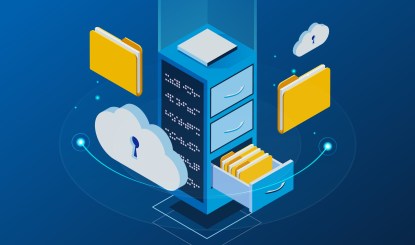The business world continues to adopt technology in a variety of ways to improve and modernize operations. Many businesses have come to rely on physical servers, especially the iSeries, to store data and run critical business applications. However, as technology has progressed, more and more organizations are looking for the many benefits of cloud-based servers. This can present serious challenges if organizations have relied on iSeries-based applications to run their operations, but it doesn’t mean organizations have to abandon their old servers and start fresh.
The iSeries is built for business and provides the stability and power that businesses rely on. However, there are some issues that can arise from counting on them for too long – issues that require leaders to think about switching away from them.
When iSeries Servers Begin Aging
Technology changes regularly, and the world frequently reorients itself around the advances made, but when it comes to IT infrastructure, it can be costly to update an organization’s operations. Besides, if a server like IBM’s iSeries is still operating, why would it be necessary to change?
One of the biggest reasons any business leader relying on an on-premises iSeries server should consider changing their operation is that server maintenance will become increasingly more difficult and expensive. On-premises servers of any kind require a company’s staff to support the servers themselves, which requires the company to shoulder the costs of the hardware to keep the servers running.
In addition to physical maintenance posing an issue, it will become increasingly difficult to find people who are skilled with the iSeries to maintain the environment. When tech changes, the market often adapts to accommodate it, which means development will focus more on skills that will enable them to work on newer tech stacks. In many cases, the iSeries is no longer a focus for software development and IT workforce because it’s not as widespread in its usage as it was when first established.
What if I Have Custom Software on My iSeries?
As companies employed more and more digital tools, they often relied on software that was custom-built for their organization’s needs. Over time, this software became the basis on which many of the organization’s operations run, and as a consequence of this entrenchment, leaders may be reluctant to shift away from their iSeries to newer platforms due to the expense of rearchitecting critical business applications.
It’s often a difficult choice between taking a company off iSeries servers entirely or keeping them status quo. Hammer Tech has helped companies operating on iSeries servers by providing an additional option of offering colocation and managed services so that businesses don’t have to worry about the difficulties associated with managing an on-premises iSeries server.
What’s the Difference Between Colocation and Managed Services?
Colocation and managed services are two different service offerings that can be utilized for a variety of reasons. Both can occur for the purpose of compliance, cost savings, or more efficient allocation of resources, but they function differently and therefore bring different value to an organization with an iSeries server.
Colocation services involve housing your physical servers in an enterprise class data center that’s owned and managed by a third-party partner. These services enable an organization to offload the physical storage and maintenance of the servers to another organization, reducing the overall costs of the organization’s footprint. Businesses running iSeries servers are able to devote the time they’d otherwise spend maintaining their servers to more high-impact tasks that drive the business forward.
Managed services can be utilized in conjunction with colocation services, but this offering is focused on the maintenance of the server’s systems. Ensuring that servers have the necessary updates, patches, and maintenance performed can take up significant time for IT departments, but it can become increasingly difficult with iSeries servers due to the increasingly shrinking pool of talent fluent in the support of these systems.
What if I Want to Get Rid of My iSeries, but I Depend on Applications That It Runs?
If you’ve decided that you’d rather not worry about the physical iSeries servers, but you have programs critical to your operations that can only run on iSeries equipment, you may feel like you’re stuck with what you have. However, having business-critical software on an iSeries server doesn’t mean you’re stuck with purchasing or maintaining one as there are other solutions that can help bridge the gap.
Managed hosting is a process similar to managed services in which we run the servers on your behalf so you have access to the software without worrying about replacing your iSeries hardware. Typically, this is best suited for an environment that depends on a server at the end of its useful life, but managed hosting can be a useful solution at any stage of a server’s life cycle.
Conclusion
Updating IT infrastructure is talked about too often as a transition from physical servers to the cloud, and it can understandably make businesses that rely on iSeries servers reluctant to make that change.
However, modernizing IT doesn’t necessarily need to require the decommissioning of iSeries servers; taking advantage of colocation, managed services, or hosting services can extend the life of iSeries services like this for years, reducing the overall cost of maintaining them and allowing organizations to focus on the tasks that will have the highest impact on their operations.

